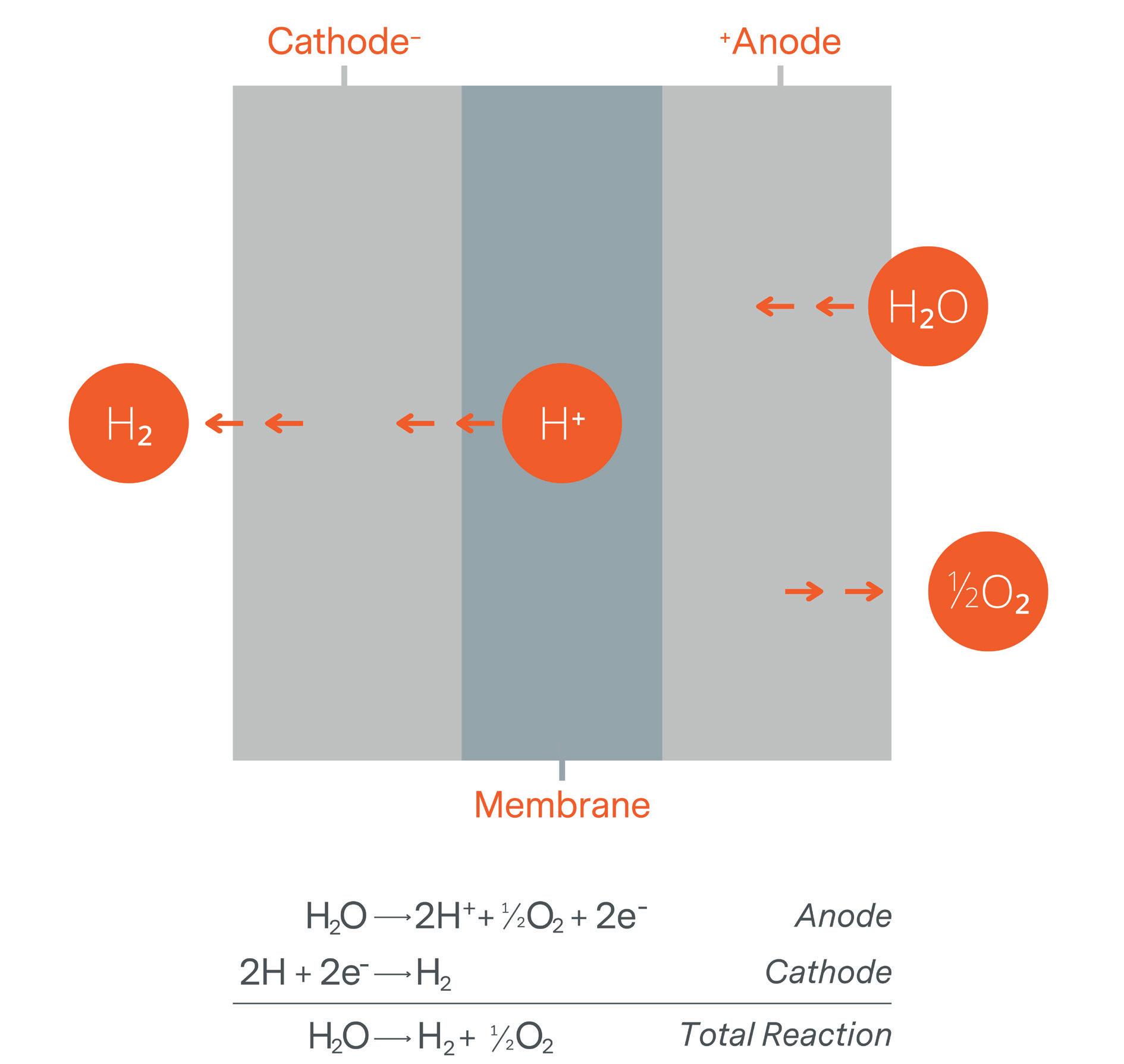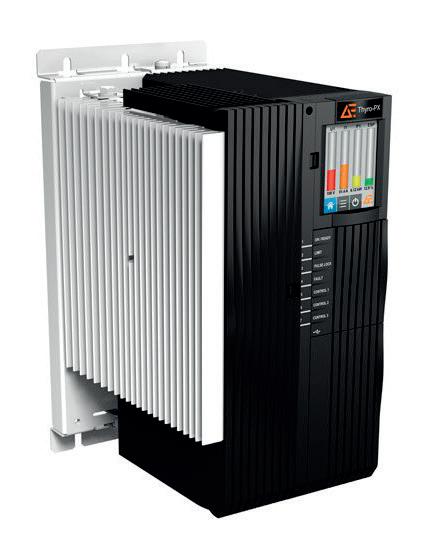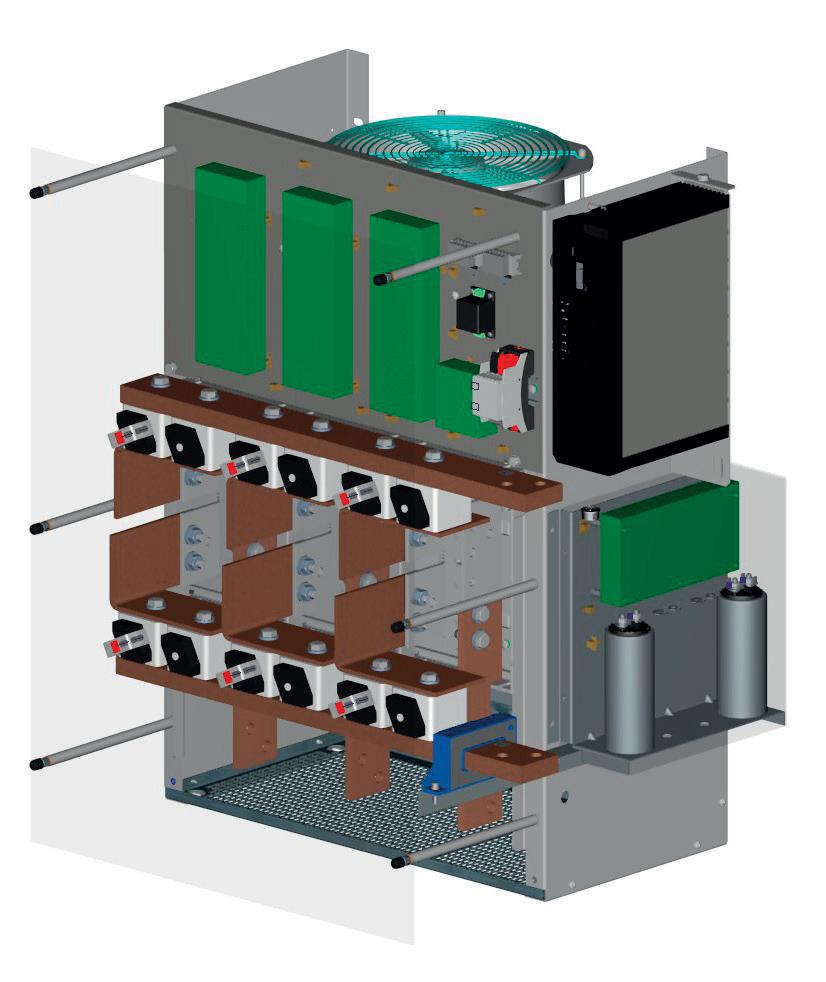
10 minute read
Power up your power choices
Andreas Breitkopf, Advanced Energy Industries Inc., USA, introduces new power control technologies that could improve electrolyser efficiencies and reduce lifetime operating costs.
At present, around 5% of hydrogen gas used worldwide is created by electrolysis, but according to market research firm, Industry Research, the global hydrogen electrolyser market is set for rapid growth of around 25% from 2022 to 2028.1 This is driven by a variety of factors ranging from companies seeking more environmentally-friendly ways to produce this increasingly-important gas, and global commitments to increase electrolyser capacity in line with environmental commitments. As a result, it is estimated that global electrolyser capacities will reach an unprecedented 213.5 GW by 2040.
One of the key challenges for companies building and maintaining electrolysers is keeping operating costs as
low as possible over the anticipated lifetime. Reducing the energy requirements of the high-power systems that provide the electrolyser’s energy is therefore a key objective. These applications require high current approaches. This can be achieved by insulated bipolar gate transistor (IGBT)-based high power switching and silicon-controlled rectifiers (SCRs). These are also known as thyristors, and are commonly used for high-power, high-current applications because of their proven reliability, availability of suitable ratings of semi-conductor switches, robustness, long life, and simplicity.
This article will look at the power requirements of electrolyser systems, discuss the lifetime energy savings that even a few percentage points efficiency gains can bring, and explore how deploying SCRs for power control can help deliver these gains when compared to IGBT technologies.

Figure 1. Overview of the PEM electrolyser.
Electrolysers: an overview
An electrolyser uses electricity to break water into its constituent parts, hydrogen and oxygen, through the process of electrolysis. They form an essential part of the green energy chain as the hydrogen they produce can be used in a multitude of applications – as can the oxygen that is a valuable byproduct of the process. There are several types of electrolyser available, depending on the size and function required.
Alkaline electrolysers are a well-proven and commercially-used method. They have been used on a large-scale since the 1920s, and use a liquid electrolyte (potassium hydroxide or sodium hydroxide) and water. The hydrogen is produced in a cell, appearing at the cathode when a current is applied, while oxygen is created at the anode.
High-temperature solid oxide electrolyser cells (SOEC) have great potential for the efficient and economical production of hydrogen by replacing the liquid electrolyte with a solid. They can operate at temperatures above 500°C.
The final electrolyser type, and the one that will be the focus of this article, is the proton exchange membrane (PEM) electrolyser that uses a solid polymer (usually formed from a special plastic) as the electrolyte. When a current is applied to the cell stack, the water is split into hydrogen

Figure 2. Block diagram of a typical electrolyser.
and oxygen. As the positively-charged hydrogen ions (protons) pass through the membrane, they form hydrogen gas around the cathode.
Beyond the electrolyser cell, the wider system consists of a water supply inlet with filtering and a storage tank for demineralised water that will be passed through the electrolyser. The power supply for the PEM electrolyser is a key element in determining the cost and performance of the system. A paper published by MIT estimates that the power solution makes up around 30% of total system costs – making it the most expensive single item.2 Furthermore, with rising energy costs, the efficiency of the ACDC conversion process is critical to controlling operating expenses. With a 10 MW power supply, every percentage point of efficiency equates to 100 kW of losses, incurring the cost of the wasted power, as well as any cost associated with removing the waste heat from the system.
In some systems, the oxygen is simply released to the atmosphere as a harmless byproduct of the process, while in others it may be stored and used (or sold) as a valuable


Figure 3. Modern SCR power controllers are sophisticated and highly efficient.
Table 1. Expected savings in a US installation
Price per kWh (US$)
Estimated operating hr/yr 0.10/kWh Top
7000 hr Top
Lifetime 15 yr Top Efficiency of IGBT solution* 98.50% ηIGBT
Highly-efficient AE B12 thyristor rectifier* 99.84% ηB12Rec
Delta efficiency thyristor to IGBT solution 1.34%
Δη
Power losses savings 134.5 kW PVS
Annual energy savings
Annual cost savings 941 383 kWh -
US$94.138 -
Cost savings across whole lifetime (15 years) US$1 412 075 -
* Without fuses, transformer and chokes commodity. In all systems, the hydrogen gas is processed and stored. Initially, there is a deoxidation process, followed by compression and cooling before the gas enters a storage tank, ready for transport or use.
The uses and market for electrolysers
Electrolysers are used to produce hydrogen for four main applications: y Industrial: crucial industrial processes such as the manufacture of flat glass, steel and semiconductors all rely on hydrogen as an essential part of the process. y Transportation: hydrogen can be used to power fuel cell-based electric vehicles (EVs) including buses, commercial vehicles, trains and boats. It is an environmentally-friendly solution that overcomes the long recharge times associated with batteries. y Fuel processing: hydrogen is used in fossil fuel refineries for sulfur removal. y Chemical production: hydrogen is also used in the production of environmentally-friendly chemicals such as fertilizers (ammonia), methanol and Jet-A1 fuel.
As there is growth in the applications that use hydrogen, the demand for the gas and electrolysers is also growing.
Hydrogen is a clean energy source, especially when the electricity used to produce it is also from a sustainable source. While power sector decarbonisation is currently centred around wind and solar power, these technologies rely upon nature and can be intermittent. However, hydrogen can play a role here, bridging the gaps when there is not enough wind or solar energy to meet the needs of the grid. Additionally, when solar or wind levels exceed the grid’s needs, the excess electricity that is generated can be used to produce more hydrogen to be stored for future load levelling.
Another driver behind the growth in electrolysers is the move toward domestic energy production as nations seek to reduce the risks of being overly dependent on foreign energy sources. Hydrogen production is seen as an environmentally-friendly way of increasing sovereignty over energy supplies, while accelerating the journey towards sustainability.
DC power for electrolysers
Despite delivering power levels in the megawatt region, the requirements for ACDC power supplies for electrolysers are similar to smaller units: high efficiency, small in size, and reduced cost. In many applications, the power supply is integrated into a container along with the electrolyser, so the space can be limited.
Efficiency is crucial in designing these supplies. Significant power losses generate heat, especially for power levels that are often beyond 1 MW. As every percentage point of reduced efficiency represents 10 kW of loss at 1 MW (and 100 kW at 10 MW), inefficient power solutions require significant cooling, which increases size and cost. However, the use of water cooling can only improve the situation to a certain extent.
In applications such as steel plants that require constant (24 hr/d) hydrogen supply, the electrolyser runs constantly.
As a result, if losses are significant, operating expenses can rise dramatically.
The SCRs that are used in electrolysis must be highly reliable. This is especially important for applications that rely on a constant supply of hydrogen. Less obvious, but equally important, is the ability to control and monitor the power supply as part of an overall system.
There are various types of solution and technologies available to deliver the required power. At low power levels, MOSFET-based switch mode power supplies (SMPS) may be used, either by itself or in a parallel configuration. This will typically suit requirements of up to around 10 – 20 kW. As power needs increase, IGBT technology comes to the fore. While this does not offer the ultimate efficiency, it is a robust and established technology that generally produces fewer harmonics. The benefit of this is reduced filtering requirements. IGBT power is suitable for power levels of up to around 500 kW.
At the very highest power levels, where efficiency becomes critical – certainly above 1 MW – SCR technology is the preferred solution. While this may require more noise filtering than IGBT, it offers better efficiency and reliability.
SCRs: an introduction
Since their introduction in the 1960s, SCR power controllers have progressed from handling several hundred watts, to the megawatt region. Built around thyristors, these systems can switch electrical loads quickly for billions of operations. Compared to other solutions, they are more reliable and cost-effective, offer a finer degree of control, and require less maintenance.
SCR power controllers offer infinite resolution, allowing for the precise, accurate and stepless control of any load. Their solid-state nature (no moving parts) results in excellent longevity and an extremely fast response – typically within milliseconds. Perhaps the greatest benefit is their ability to deliver up to 99.8% efficiency, which exceeds all other technologies, including IGBTs.
Modern SCR power controllers (such as the Thyro family from Advanced Energy) include a wide range of features that simplify the design of electrolysers, including the ability to switch current, voltage or power, and control ohmic or reactive loads. A semiconductor fuse provides safe operation with the ability to auto-reset. Basic models include LED indication on the front panel, while more sophisticated versions may include a touchscreen to allow operators to monitor and control the unit.
Depending upon the sophistication required by the application, standard units may also include a communications interface (Ethernet/IP, Profibus, Modbus, TCP/IP, Profinet or EtherCAT), as well as multi-zone capability for several disparate loads. Most manufacturers also provide software to speed up the process of configuring the controller.
Potential energy and cost savings over the electrolyser lifetime
Using an SCR-based rectifier in different topologies could provide efficiency gains of between 1 – 2%. Table 1 is an example of the expected savings in a US installation. Expected savings are calculated by increasing the efficiency of a 10 MW electrolyser system by 1.34%, from 98.5% to 99.84%.
Due to higher energy costs in most European countries, expected savings are even higher. Table 2 is an example of the expected savings in a German installation. Expected savings are calculated by increasing the efficiency of a 10 MW electrolyser system by 1.34%, from 98.5% to 99.84%.
Price per kWh for Germany (€) 0.17/kWh Top
Estimated operating hr/yr
Lifetime 7000 yr Top
15 yr Top
Efficiency of IGBT solution* 98.50% ηIGBT
Highly-efficient AE B12 thyristor rectifier* 99.84% ηB12Rec
Delta efficiency thyristor to IGBT solution 1.34%
Δη
Power losses savings 134.5 kW PVS
Annual energy savings
Annual cost savings 941 383 kWh -
€160.035 -
Cost savings across whole lifetime (15 years) €2 400 527 -
* Without fuses, transformer and chokes
Conclusion
As we transition to a green future, hydrogen is becoming more important within industrial processes, and as a fuel for vehicles. With the current energy crisis, countries are moving rapidly to increase control of their energy supply chain, and hydrogen generation is proving popular as it is relatively quick to establish – and environmentally-friendly.
The electrolysers that split water into its constituent parts (hydrogen and oxygen) are significant consumers of electrical power. As a result, to achieve the cost reduction targets for hydrogen, it is essential that these systems operate efficiently, and are compact and reliable.
While other options such as SMPS and IGBT controllers are available, these struggle to produce the power needed and/or achieve the very high efficiencies that are required. However, modern SCR power controllers are able to operate at efficiencies of as high as 99.84%, while providing a range of safety and operating features.
Reference
1. 'Global hydrogen electrolyzer market research report 2022', Industry Research, (17 January 2022), https:// www.industryresearch.co/global-hydrogen-electrolyzermarket-19962595 2. 'AC-DC Converters for Electrolyzer Applications: State of the Art and Future Challenges', MDPI, https://www.mdpi.com/20799292/9/6/912










